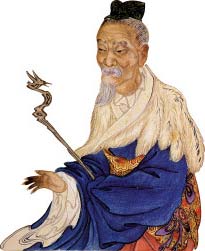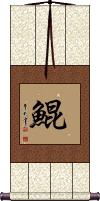Many custom options...
And formats...

Kun in Chinese / Japanese...
Buy a Kun calligraphy wall scroll here!
Personalize your custom “Kun” project by clicking the button next to your favorite “Kun” title below...
Kun
Sea Creature
A 鲲 (Kun) is a famous sea monster, often associated or used interchangeably with a 鵬 (Peng).
鯤 is comparable to Leviathan or Jonah's whale.
In Chinese mythology, the Kun is a giant fish said to be able to turn into a bird.
鯤 and the mythological creature is also known in Japanese and Korean. However, in some contexts, this character can refer to fry (fish babies).
A Bright Future
Incredible 10,000-Mile Flight of the Peng
鵬程萬里 is an ancient Chinese proverb used in modern times to wish someone a long and successful career.
It's really about the 10,000 Flight of the Peng (Peng, also known as Roc is a mythical fish that can turn into a bird and take flight).

莊子
Zhuangzi or Chuang Tzu
Breaking down each character:
1. Peng or Roc (a kind of bird).
2. Journey (in this case, a flight).
3. 10,000 (Ten Thousand).
4. Li is a unit of distance often referred to as a “Chinese Mile,” though the real distance is about half a kilometer.
Direct Translation: “Peng's Journey [of] 10,000 Li.”
Literal meaning: “The 10,000-Li Flying Range Of The Roc.”
Perceived meaning: “To have a bright future” or “To go far.”
This proverb/idiom comes from the book of Zhuangzi or Chuang Tzu. It tells the tale of a huge fish that could turn into a gigantic bird. This bird was called a “peng” and was many miles long. This legendary size allowed the Peng to fly from the Northern Sea to the Southern Sea in a single bound.
Wishing someone “a Peng's Journey of 10,000 Li” will imply that they can travel far without stopping and will have great success, a long career, and a prosperous future.
Not the results for kun that you were looking for?
Below are some entries from our dictionary that may match your kun search...
| Characters If shown, 2nd row is Simp. Chinese |
Pronunciation Romanization |
Simple Dictionary Definition |
鯤 鲲 see styles |
kūn kun1 k`un kun kon こん |
More info & calligraphy: Kun{chmyth} (See 鵬) kun (giant fish said to be able to turn into a bird) |
昆廷 see styles |
kūn tíng kun1 ting2 k`un t`ing kun ting |
More info & calligraphy: Quintin |
昆汀 see styles |
kūn tīng kun1 ting1 k`un t`ing kun ting |
More info & calligraphy: Quentin |
困 see styles |
kùn kun4 k`un kun kon |
to trap; to surround; hard-pressed; stranded; destitute distress |
坤 see styles |
kūn kun1 k`un kun mamoru まもる |
one of the Eight Trigrams 八卦[ba1 gua4], symbolizing earth; female principle; ☷; ancient Chinese compass point: 225° (southwest) kun (one of the trigrams of the I Ching: earth, southwest); (given name) Mamoru earth |
堃 坤 see styles |
kūn kun1 k`un kun |
variant of 坤[kun1] (mainly used in given names) See: 坤 |
壼 壸 see styles |
kǔn kun3 k`un kun tsubo つぼ tsuho つほ tsufu つふ |
palace corridor; fig. women's quarters; women (irregular kanji usage) (1) jar; pot; vase; (2) dice cup; (3) depression (i.e. the basin of a waterfall); (4) (archaism) target (when aiming an arrow); (5) (kana only) (figurative) bull's-eye; (6) (kana only) key point (of a conversation, etc.); (7) (kana only) acupuncture point; moxibustion point; (8) (kana only) nodes on a fingerboard (of a shamisen, etc.); (irregular kanji usage) (out-dated or obsolete kana usage) (1) jar; pot; vase; (2) dice cup; (3) depression (i.e. the basin of a waterfall); (4) (archaism) target (when aiming an arrow); (5) (kana only) (figurative) bull's-eye; (6) (kana only) key point (of a conversation, etc.); (7) (kana only) acupuncture point; moxibustion point; (8) (kana only) nodes on a fingerboard (of a shamisen, etc.) |
崐 昆 see styles |
kūn kun1 k`un kun |
variant of 崑|昆[kun1] See: 昆 |
崑 昆 see styles |
kūn kun1 k`un kun kon こん |
used in place names, notably Kunlun Mountains 崑崙|昆仑[Kun1 lun2]; (also used for transliteration) (given name) Kon |
悃 see styles |
kǔn kun3 k`un kun makoto まこと |
sincere (given name) Makoto |
捆 see styles |
kǔn kun3 k`un kun |
a bunch; to tie together; bundle |
昆 see styles |
kūn kun1 k`un kun kon こん |
descendant; elder brother; a style of Chinese poetry (s,m) Kon |
晜 see styles |
kūn kun1 k`un kun |
descendant; elder brother |
梱 see styles |
kǔn kun3 k`un kun kori こり |
movable door sill (n,n-suf,ctr) (1) wrapped package; bale; (2) (See 行李) wicker trunk; wicker luggage |
棍 see styles |
gùn gun4 kun kon こん |
stick; rod; truncheon; scoundrel; villain (rare) (See 棍棒) stick; club |
滾 滚 see styles |
gǔn gun3 kun |
to boil; to roll; to take a hike; Get lost! |
焜 see styles |
kūn kun1 k`un kun |
brilliant |
熴 see styles |
kūn kun1 k`un kun |
variant of 焜[kun1] |
琨 see styles |
kūn kun1 k`un kun |
(jade) |
瑻 see styles |
kūn kun1 k`un kun |
old variant of 琨[kun1] |
睏 困 see styles |
kùn kun4 k`un kun |
sleepy; tired See: 困 |
磙 see styles |
gǔn gun3 kun |
roller; to level with a roller |
稛 see styles |
kǔn kun3 k`un kun |
full |
綑 捆 see styles |
kǔn kun3 k`un kun |
variant of 捆[kun3] |
緄 绲 see styles |
gǔn gun3 kun |
cord; embroidered sash; to sew |
菎 see styles |
kūn kun1 k`un kun |
beautiful jade; bamboo |
蔉 see styles |
gǔn gun3 kun |
to bank up the roots of plants |
蜫 see styles |
kūn kun1 k`un kun kon |
Insects, creeping things. |
袞 衮 see styles |
gǔn gun3 kun |
imperial robe |
裍 see styles |
kǔn kun3 k`un kun |
a border or band on the edge of a dress |
Click here for more kun results from our dictionary
The following table may be helpful for those studying Chinese or Japanese...
| Title | Characters | Romaji (Romanized Japanese) | Various forms of Romanized Chinese | |
| Kun | 鯤 鲲 | kon | kūn / kun1 / kun | k`un / kun |
| A Bright Future | 鵬程萬里 鹏程万里 | péng chéng wàn lǐ peng2 cheng2 wan4 li3 peng cheng wan li pengchengwanli | p`eng ch`eng wan li pengchengwanli peng cheng wan li |
|
| In some entries above you will see that characters have different versions above and below a line. In these cases, the characters above the line are Traditional Chinese, while the ones below are Simplified Chinese. | ||||
Successful Chinese Character and Japanese Kanji calligraphy searches within the last few hours...





